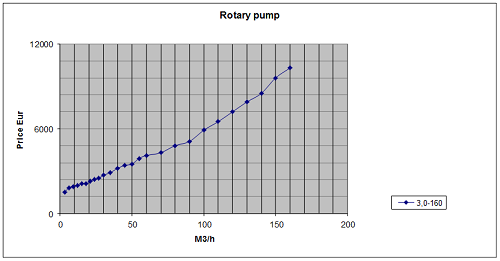Calculate equipment costs based on parameters

In recent time, facilities, products and services have become smarter and more automated. As much as technology has advanced, estimating techniques evolve as well. Despite the fact that many estimators still use simple spreadsheet tools, the last years brought us advanced estimating software to the market. Long lists of historical prices and quotes can be transformed into intelligent cost models to predict equipment costs faster, easier and more accurately.
A cost model relates the cost of equipment to specific parameters that drive its cost, thereby forming one or more Cost Estimate Relationships (CERs). Such a model can be composed of a CER found by regression analysis, design standards, or a combination of both methods. Let’s have a look at them:
Regression Analysis
A modern data software tool for project controls allows you to perform regression analysis on data. Make use of this to analyze historical cost data and quotations to try and find cost estimate relationships (CERs). For this to work, technical scope information is required to filter on relevant data. Try to look for relationships between the specifications of previously procured materials or labor.
For example, by studying how the size and material type of pumps relates to cost, you might be able to find CERs. To do this correctly, you index all costs to one price level and make the scope comparable. This enables you to setup parametric estimation models for future projects, adding intelligence to otherwise unused procurement data. The graph below shows an example of a CER between pump capacity and its price:

This can be made into a cost model. The result is a simple take-off sheet that the estimator needs to fill in when this type of pump is encountered on the equipment list:

Design standards
Similar to regression models, the user can enter design parameters like pressure, temperature and sizing to obtain equipment cost, labor hours, weight, etc. However, the way the model determines these values is different. Instead of using a formula to directly relate a parameter to cost, an engineering model actually calculates the physical properties of the object you are estimating. It might determine sizes, wall thickness or installation effort. The result is a more accurate prediction that provides more options to fine-tune the model to the specific project scope.
For example, let’s say you want to calculate the costs of a crude oil storage tank. From its dimensions, temperature requirements, corrosion resistance, etc. you are able to predict the material type and number and thickness of wall plates that make up the tank. From this, the amount of steel is calculated. A price curve in the background then calculates the cost and amount of installation hours. Because the steel plates need to be welded together, this also gives you an indication of the required welding hours. This same principle can be applied to its foundation, pit, roof, insulation, platforms and other aspects of the design. The image below is an example of such a model.

Something to add to this article or do you have questions? Please contact us.